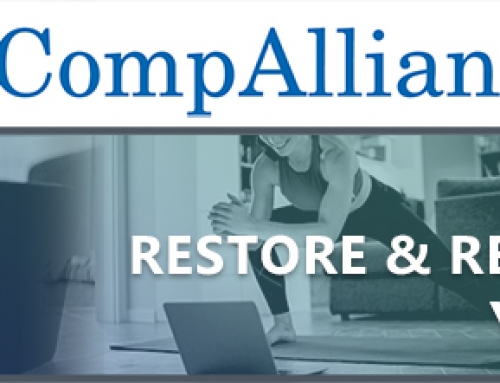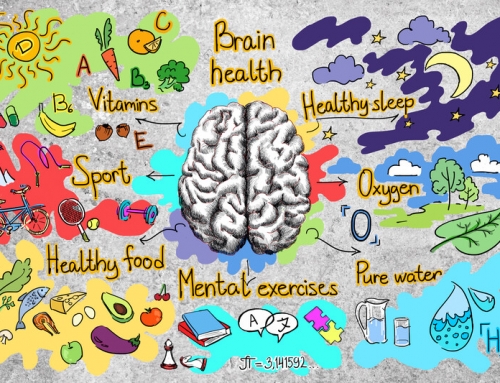Whether you’re returning to the office, or you will continue to work from home for the foreseeable future, one thing is universal: Caring for ourselves helps us serve our clients and families and keeps us healthy
This was originally posted in our Top Tips for Best Practices in Workers’ Compensation section on our website. We think with all that has been going on in our world, and how it may be impacting our ability for self-care we wanted to re-post with some additional thoughts.
We have all learned if we cannot take care of ourselves, how can we help others? Working from home has been a transition for many of us. You’ve had to deal with ergonomic issues that may not have seemed significant if you were only working from home a few hours a month but are very significant when you’re working from home nine or ten hours per day. When we work in isolation, we often find ourselves sitting for longer periods. We forget to move and take stretch breaks. With gyms and yoga studios closing, then reopening, and now closing again, you may have trouble getting into an exercise regimen or may be feeling stiff or sluggish.
Since I originally wrote this article, we have also had to deal with major social issues that are most likely impacting our outlook and may be impacting your ability to provide self-care. We are not only working in isolation, we are also in social isolation, and many of our avenues for “letting off steam”, decompressing or relaxation in general are not available to us at this time. How can we when practicing social distancing find avenues to provide self-care. Consider one or all of the following best practices to integrate into your self-care regimen.
5 Best Practices to Consider When Evaluating Your Ability to Care for Yourself and Your Clients
1. Learn How to Relax. One method to consider is the Practice of Mindfulness
What Is Mindfulness? Mindfulness is a state of intentional, nonjudgmental focus on the present moment. Mindfulness techniques are often incorporated into other practices, such as yoga or meditation. It is often thought to include the following elements:
- Awareness – Being tuned in to what is happening in the present moment, including sights, sounds, smells, or physical sensations you might usually ignore.
- Focus – Paying attention to the present moment, without thinking about past or future events.
- Acceptance – Accepting whatever you might be feeling or thinking, without judging it or trying to change it or your reactions.
- Observation – Recognizing unpleasant sensations, thoughts, and feelings as temporary and fleeting, observing them objectively without reaction or judgment.
What Are the Benefits of Mindfulness? Mindfulness has been studied for many years. According to recent research, it has several benefits for physical and mental health. Some of the strongest health benefits include:
- Improves mood – Mindfulness training may reduce depression and anxiety. One study found that mindfulness training was as effective as antidepressant medications in preventing a depression relapse.
- Reduces stress and its consequences – Mindfulness can lead to less intense stress responses. This has many health benefits, such as lowering your blood pressure and strengthening your immune system.
- Improves coping with pain –People with chronic pain who practice mindfulness meditation report less severe pain and pain-related distress. They are also more active despite their pain.
- Improves brain functions – Practicing mindfulness helps build your ability to pay attention and focus. Over time, this training can sharpen memory and improve mental performance.
- Helps with weight management – Some mindfulness techniques have been shown to reduce overeating and obesity.
2. Connect with a Support System
Don’t forget to continue to connect with your worksite and your friends. It is worth the effort! Your employer may have an Employee Health Department, an EAP provider or a Human Resources representative. They are there to help you come up with an effective plan for managing your stressors, so you can perform your best on the job.
Your friends can also be a wonderful support system but also keep you accountable if you choose to begin a program to increase your fitness level. Grab a buddy and get out there! You can social distance while walking, or you can even virtually exercise together. You are more likely to keep that commitment as you won’t want to let the team down.
3. Keep A Stress or Gratitude Journal
Writing down items or thoughts that stress you, or perhaps even items that upon reflection you are grateful for can be cathartic. It allows you to self-reflect, can help you to keep your thoughts organized, and help you to deal with your big thoughts in a healthy and safe way. On a positive note, as you record your ideas on-the-go, you can improve your writing skills.
4. Take your Vacation Time and Reboot
I am sure you are finding yourself working at all hours of the day, during this “Stay at Home, Work Safe” time frame. It is much harder to switch off when your office is in your home.
We at CompAlliance are encouraging our staff to set up a “staycation” with their families. Just because we cannot travel at this time, doesn’t mean we should not take a break from work. Employees who take time off from work report feeling less stress, less anxiety, and fewer instances of depression. Those aren’t the only positive effects, either; regular vacations are linked to lower risk for heart disease, and the experience of a vacation is shown to have a lasting impact on general well being and a perception of a life well-lived.
Happier, healthier employees are more productive. We Americans tend to leave vacation time on the table every year. Final note on this, don’t check in on work while you are on staycation.
5. Break away from media
In today’s digital world, it’s easy to feel pressure to be available 24 hours a day, especially when you have been working from home. If you find yourself spending significant time reading email, social networking sites, watching media coverage of the pandemic or other social unrest, and notice this is increasing your stress level, consider setting up structured amounts of time on these activities. Use trusted sources for your pandemic news, e.g., the CDC.
CompAlliance is proud to also offer our clients additional resources to maintain your health and well-being.
CompAlliance has partnered with Restore and Renew to bring you a series of free, twice-weekly yoga virtual classes.
These classes vary in length from 10-minute, quick breaks that can be done from your chair, to 30-minute sessions you can enjoy during your lunch hour or even before or after work. Each class is offered with instruction suitable for beginners or the seasoned yoga practitioner. You’ll walk away feeling relaxed, refreshed, and with renewed energy levels. You’ll be ready to serve your clients and maintain your health and vibrancy. Click here to register for these sessions.
CompAlliance Resources to Maintain Your Health and Well-being and Assist Your Recovering Workers. Following are links to some of these resources.
Blog article – Getting Ready for Work as the Pandemic Levels Our or (Get Up Offa That Thing)
Virtual Ergonomic Training – Keeping Your Newly “Stay Home, Work Safe” Employees’ Worksite Safe
24/7 Telephonic Coronavirus (COVID-19) Nurse Triage – Helping to clarify and offer alternatives
Hypothetical Employability Evaluation – Assisting in determining the potential for a Recovering Worker’s Capabilities to Return to Work
Alternative Transitional Duty – Yes even during these trying times your Recovering Worker can be placed in an essential volunteer position to assist with transitional Return to Work
CompAlliance is honored to be your Managed Care Services Provider during these trying times. We are here to assist you so as your provide services and resources for your recovering workers.


